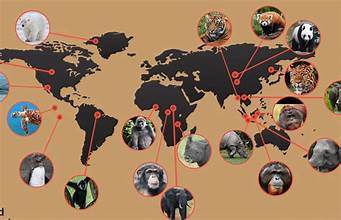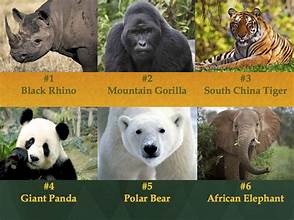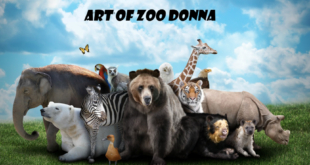Introduction
In the intricate tapestry of our planet’s biodiversity, the plight of endangered animals is a critical focal point demanding our attention. This section, denoted as 3.2.7, serves as a lens through which we delve into the profound challenges faced by endangered species and the multifaceted efforts aimed at their conservation. From the fundamental role of biodiversity in ecosystem health to the ethical dilemmas posed by conservation practices, join us on an enlightening journey through the nuanced world of endangered animals, exploring the urgent need for global collaboration in safeguarding the delicate balance of our natural world.

Table of Contents
Understanding the Significance of Biodiversity (3.2.7.1)
Biodiversity’s Role in Ecosystem Health
Biodiversity is the backbone of thriving ecosystems. This section explores how the intricate web of life contributes to ecological balance. Diverse species play unique roles, from pollination to pest control, ensuring the stability and resilience of natural systems. By understanding the interconnectedness of species, we appreciate the delicate balance that sustains life on Earth.
The Alarming Decline of Endangered Animals (3.2.7.2)
Overview of Threats Faced by Endangered Species
Dive into the multifaceted threats that propel endangered species towards extinction. Habitat loss, driven by factors such as deforestation and urbanization, disrupts the natural environments these species rely on. Climate change exacerbates these issues, altering ecosystems and impacting species’ ability to adapt. Poaching, pollution, and invasive species further contribute to the challenges faced by endangered animals.
Conservation Efforts and Success Stories (3.2.7.3)
Global Conservation Initiatives
Explore the international landscape of conservation efforts. Organizations like the World Wildlife Fund (WWF) and agreements such as the Convention on International Trade in Endangered Species of Wild Fauna and Flora (CITES) play crucial roles. Understanding these global initiatives lays the foundation for collaborative approaches to safeguard biodiversity.

Local Success Stories
Highlight heartening success stories where concerted efforts have led to the recovery of endangered species. From the resurgence of the California condor to the protection of sea turtle nesting sites, local conservation endeavors showcase the power of community engagement and strategic partnerships.
The Role of Technology in Conservation (3.2.7.4)
Technological Innovations in Wildlife Protection

Embark on a journey into the cutting-edge technologies revolutionizing wildlife conservation. Satellite tracking enables real-time monitoring of animal movements, providing insights critical for protection. DNA analysis aids in species identification and genetic diversity assessments, informing conservation strategies. By harnessing technology, conservationists are enhancing their ability to safeguard endangered species.
Challenges and Controversies in Conservation (3.2.7.5)
Ethical Dilemmas in Conservation Practices
Navigate the nuanced ethical landscape of conservation. Interventions such as captive breeding and habitat restoration raise questions about the appropriate level of human interference. Delve into the delicate balance between preserving natural processes and the moral obligation to prevent species extinction.
Individual Action for Conservation (3.2.7.6)
Empowering Individuals to Make a Difference
Empower individuals to become advocates for endangered animals in their daily lives. From supporting sustainable products to making informed choices about wildlife tourism, individuals can play a crucial role. Explore how collective actions, no matter how small, contribute to a broader movement for conservation.
Looking Forward: Future Prospects (3.2.7.7)
Emerging Strategies for Endangered Species Protection
Peer into the future of endangered species protection. From conservation drones that monitor wildlife to genetic technologies offering new avenues for species revival, innovative strategies are on the horizon. Discuss the importance of adaptability in conservation practices to address evolving challenges such as emerging diseases and habitat shifts.
FAQs
Q1: Why is biodiversity important, and how does it relate to endangered animals?
- A: Biodiversity is crucial for ecosystem health as it ensures ecological balance and resilience. Endangered animals are often indicators of ecosystem imbalances. Their conservation is essential for maintaining biodiversity and the overall health of our planet.
Q2: What are the main threats faced by endangered animals?
- A: Endangered animals face various threats, including habitat loss due to deforestation and urbanization, climate change impacts, poaching, pollution, and the introduction of invasive species. Understanding and addressing these threats are vital for conservation efforts.
Q3: How can individuals contribute to the conservation of endangered animals?
- A: Individuals can contribute by supporting sustainable practices, making environmentally conscious choices in daily life, and participating in or supporting conservation initiatives. Raising awareness, choosing sustainable products, and advocating for conservation are impactful actions.
Q4: What are some global conservation initiatives for endangered animals?
- A: Global conservation initiatives include organizations like the World Wildlife Fund (WWF) and international agreements such as the Convention on International Trade in Endangered Species of Wild Fauna and Flora (CITES). These efforts aim to coordinate international cooperation for the protection of endangered species.
Q5: Can technology play a role in the conservation of endangered animals?
- A: Yes, technology plays a crucial role in wildlife conservation. Satellite tracking helps monitor animal movements, DNA analysis aids in species identification, and drones provide valuable data for protection efforts. Technological advancements enhance our ability to understand and protect endangered species.
Q6: Are there success stories in the conservation of endangered animals?
- A: Yes, there are numerous success stories in endangered animal conservation. Examples include the recovery of the California condor and the protection of sea turtle nesting sites. These success stories demonstrate the positive impact of dedicated conservation efforts.
Q7: What ethical dilemmas exist in conservation practices for endangered animals?
- A: Ethical dilemmas in conservation include questions about the level of human intervention, such as captive breeding and habitat restoration. Striking a balance between preserving natural processes and preventing species extinction raises complex ethical considerations.
Q8: What emerging strategies are being explored for the protection of endangered species?
- A: Emerging strategies include the use of conservation drones for monitoring, genetic technologies for species revival, and innovative approaches to address new challenges like emerging diseases and habitat shifts. These strategies showcase the evolving nature of conservation practices.
Q9: How can individuals stay informed about the conservation status of endangered animals?
- A: Staying informed can involve following reputable conservation organizations, accessing online databases on endangered species, and participating in educational programs. Additionally, individuals can engage with local conservation initiatives and support awareness campaigns.
Q10: What is the outlook for the future of endangered species conservation?
- A: The future of endangered species conservation involves adapting to emerging challenges, embracing innovative technologies, and fostering global collaboration. Continued efforts to address threats, engage communities, and implement effective conservation strategies are crucial for a positive outlook.
 Nextezone: Igniting Tomorrow's Potential with Innovation Today Innovate. Explore. Elevate. Nextezone – Where Vision Meets Innovation.
Nextezone: Igniting Tomorrow's Potential with Innovation Today Innovate. Explore. Elevate. Nextezone – Where Vision Meets Innovation.
